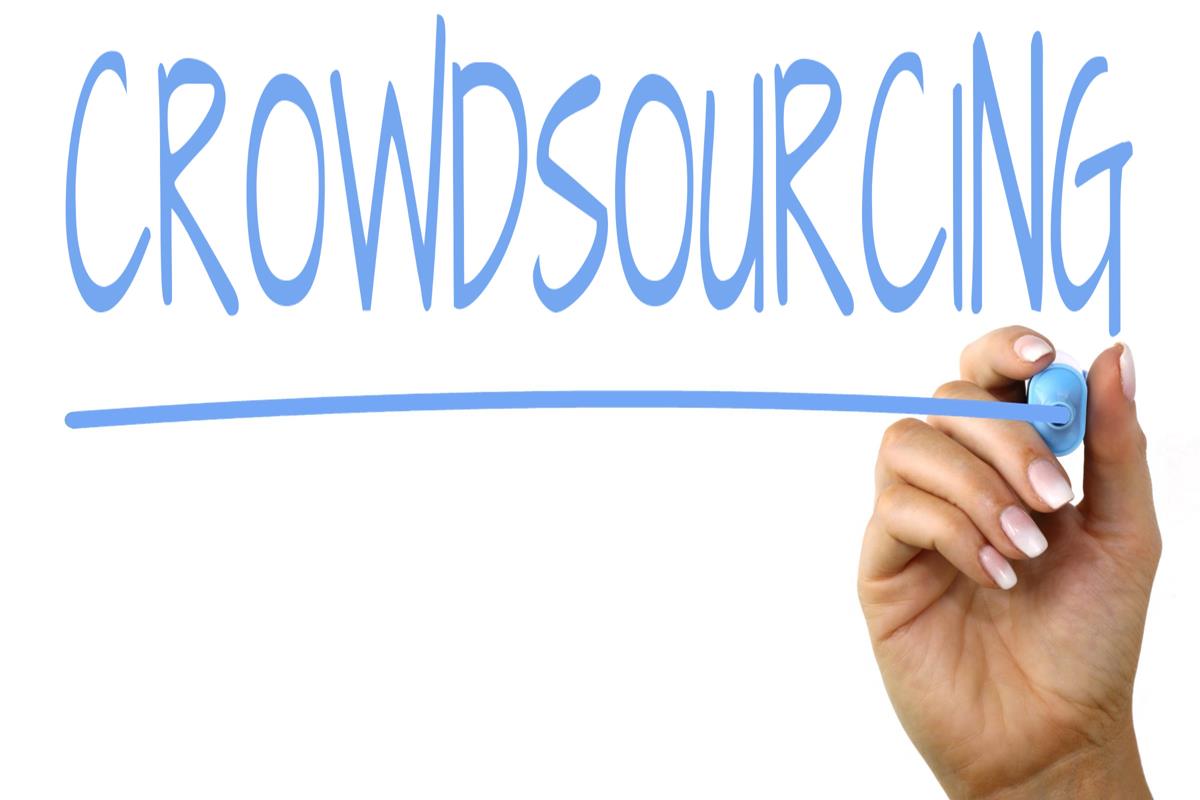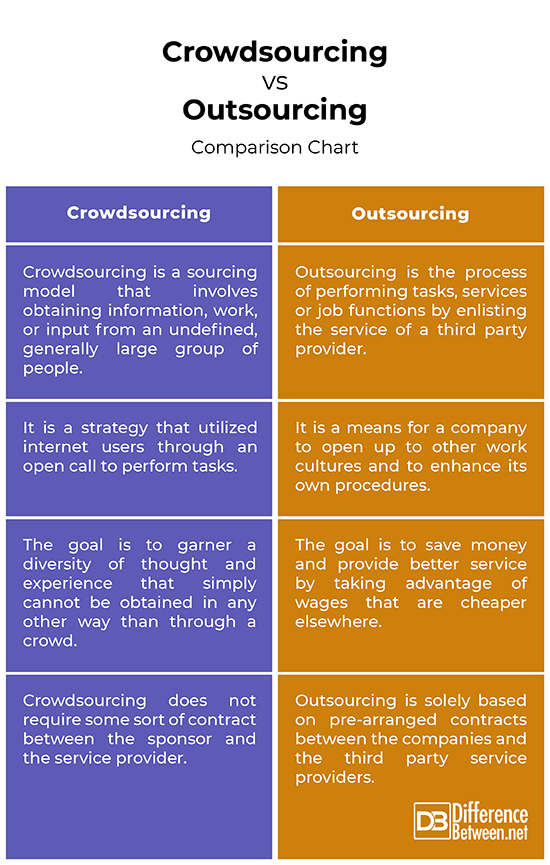Difference Between Crowdsourcing and Outsourcing
In lieu of outsourcing certain tasks, processes or job functions to some third party service provider with access to countries where labor is relatively cheaper, businesses throughout the world are relying more and more on a fraternity of internet users, with the goal of turning their relationship into something that is more collaborative. You must be already familiar with the outsourcing model which is already popular among the global software companies, government agencies, non-profit organizations, or other entities looking for labor arbitrage. Crowdsourcing could be considered as an advanced model of outsourcing to the crowd of internet users via the World Wide Web.

What is Crowdsourcing?
Crowdsourcing is a sourcing model that involves obtaining information, work, or input from an undefined, generally large group of people in the form of an open call. Let’s say you want to start a business and you want funds for your business. You can either do so all by yourself, if you have capital or you can ask a number of people to invest a little bit in your business venture. Crowdsourcing is a practice of taking a job traditionally performed by a designated agent and outsourcing it to not just a single provider but a crowd or group for a common goal. It is a strategy that utilized internet users through an open call to perform tasks. The term ‘Crowdsourcing’ was originally coined by a longtime contributing editor at Wired magazine, Jeff Howe in 2006. Since then, this sourcing model has been used by many businesses for harnessing on-demand workforce, external expertise, knowledge, and creativity.

What is Outsourcing?
Outsourcing, as the name suggests, is the business practice of performing tasks, services or job functions by enlisting the help of a third party provider. It is an agreement in which one company pays another person or agency to perform services and produce goods that could be done in-house. Outsourcing simple means moving some of a company’s internal activities and decision making responsibilities to third party providers. When a company procures products or services from sources outside of the organization, this means the company is outsourcing its products or services. For example, outsourcing is when an e-commerce company hires someone to design their website or mobile app, or when a firm hires another firm to do their accounting. It simply means allocating business activities – both service related and manufacturing processes – from an internal source and outsource it to external sources. Global software companies outsource their software development tasks to software engineers distributed across the world via online platforms.
Difference between Crowdsourcing and Outsourcing
Definition
– Outsourcing is defined as the process of performing tasks, services or job functions by enlisting the service of a third party provider. It is the allocation of business activities and processes from an internal source to an external source. Crowdsourcing can be considered as the next level of outsourcing and is defined as a practice of taking a job traditionally performed by a designated agent and outsourcing it to not just a single provider but a crowd or group for a common goal.
Model
– Crowdsourcing is a strategy that utilized internet users through an open call to perform tasks. Crowdsourcing is a more user-centric model that is not concerned with where the contributor works, but the participants are required to be connected to the network of the World Wide Web. Outsourcing, on the other hand, is just the means for a company to open up to other work cultures and to enhance its own procedures. Outsourcing is based on pre-arranged contracts between the companies and the third party service providers.
Goal
– The goal of crowdsourcing is to garner a diversity of thought and experience that simply cannot be obtained in any other way than through a crowd. Companies have been using this sourcing model for harnessing on-demand workforce, external expertise, knowledge, and creativity. Crowdsourcing drives innovation and companies use crowdsourcing tools to innovate their processes. The goal of outsourcing is to save money and provide better service by taking advantages of wages that are cheaper elsewhere. Another reason why companies use outsourcing is risk allocation because when you outsource a service to a third party provider, you essentially divert some of your risks to the suppliers too.
Crowdsourcing vs. Outsourcing: Comparison Chart

Summary of Crowdsourcing vs. Outsourcing
Crowdsourcing can be considered as a revised form of outsourcing and an alternative to subcontracting. However, unlike outsourcing, crowdsourcing does not require some sort of contract between the company and the participants, or what we conveniently call a crowd; it simply involves a large and undefined group of participants willing to collaborate. Outsourcing is the means for a company to open up to other work cultures by moving from internal sources to external sources. The main reason why companies outsource their processes and jobs is to save money by taking advantages of wages that are cheaper elsewhere.
- Difference Between Caucus and Primary - June 18, 2024
- Difference Between PPO and POS - May 30, 2024
- Difference Between RFID and NFC - May 28, 2024
Search DifferenceBetween.net :
Leave a Response
References :
[0]Sloane, Paul. A Guide to Open Innovation and Crowdsourcing: Advice from Leading Experts in the Field. London, United Kingdom: Kogan Page, 2011. Print
[1]Thuan, Nguyen Hoang. Business Process Crowdsourcing: Concept, Ontology and Decision Support. Berlin, Germany: Springer, 2018. Print
[2]Ashley, Ed. Outsourcing For Dummies. New Jersey, United States: John Wiley & Sons, 2008. Print
[3]Schniederjans, Marc J. Outsourcing and Insourcing in an International Context. New York, United States: M.E. Sharpe, 2005. Print
[4]Andro, Mathieu. Digital Libraries and Crowdsourcing. New Jersey, United States: John Wiley & Sons, 2018. Print
[5]Image credit: https://www.thebluediamondgallery.com/handwriting/images/outsourcing.jpg
[6]Image credit: https://www.thebluediamondgallery.com/handwriting/images/crowdsourcing.jpg
